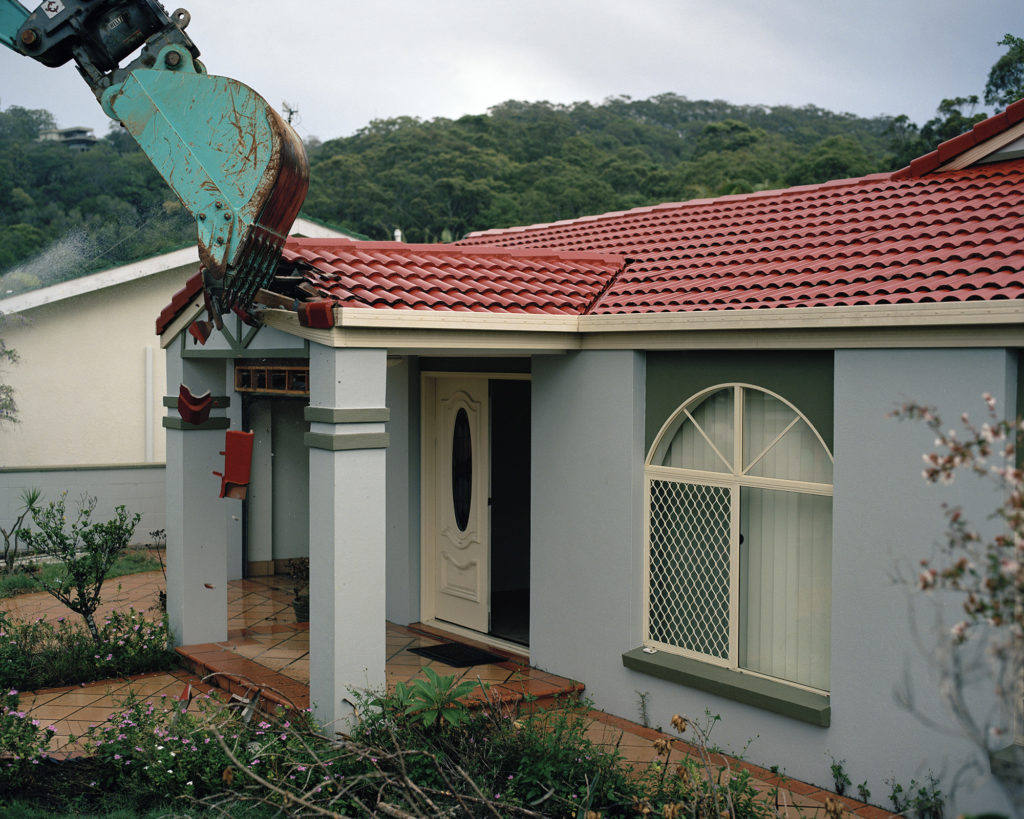Aaron Chapman is an artist and writer based on the Gold Coast, Australia working across a range of mediums including photography, sculpture and public art. Chapman’s work is motivated by themes of home and memory, and in particular, childhood.
When did you realize the series? Did it come naturally as you were reviewing-sequencing your photographs or it had a certain starting point?
The series was realised after my father passed away and the birth of my first child, which were quite close in time. I began writing and photographing to try and make sense of these significant life events but the series that you see is the result of many failures and much time, which was the most important element. I needed time to grieve and the project changed dramatically over the years. For a while I thought it was about masculinity so I was making lots of portraits of boys and men. But the true nature of the project, and of what I was cathartically doing, revealed themselves eventually.
Could you describe an anecdote from your childhood related to home, which helped you shape its meaning for you?
I don’t think I have any anecdotes to be honest. The reflection of home and childhood began when my children came into the world. Having children, you kind of see the world again through their lens. At some point I became interested in the house and how the structure protects intimacy, houses memories and provides refuge.
Do you feel that there are relationships between photography and other fields such as sculpture, literature, science and so on? In your recent solo exhibition of Purple is Black Blooming there was a large sculpture made from the packing boxes. How did the idea for this piece come?
Absolutely. Everything we know about the world is through words and images so it’s only natural that there will be these relationships. For me, the ultimate goal is storytelling and an important moment in my career was recognising the limitations of both poetry and photography. Some stories need to be told physically as opposed to verbally. As an example, after my father passed away my childhood home was eventually sold. 20 years were reduced to 90 words, and saturated pictures of the house that held these memories were advertised on a real estate website. I’m not sure a single picture or series of pictures would ever convey the weight of my feelings so I instead made a 1:1 replica of a demolition excavator bucket using the packing boxes my mother used to move from our childhood home. The idea for the piece was relative to a lot of the photographs in the series — I’ve been photographing homes being demolished for a while now so it was also a motif throughout Purple is Black Blooming.
Aside from photographing, you also write about photography. What are the possible dynamics between photography-art and text? How and when do they enhance each other?
I majored in poetry and literature at university and since picking up a camera, have always tried to combine both text and image, though, with not much success. I find it incredibly difficult. Even with Purple is Black Blooming, I had been writing throughout the picture-making process and was planning on exhibiting text alongside image. About a week out from opening night I pulled the pin on the text component. It just wasn’t going to work.
There are so many dynamic combinations possible but I think text and image enhance each other when telling two different moments of the same story. Rebecca Norris Webb does this beautifully. And Jim Goldberg’s use of authorisation, asking his portrait subjects to sign off on their picture is a really powerful tool in storytelling.
What is the relationship between a photobook and an exhibition? Which form of presentation do you appreciate the most for your own work and which form do you like to look at photography in general?
I did this masterclass with Alec Soth a couple of years ago and he had this great analogy which I mostly forget, but it was something like, “Photographs are songs, photobooks are records, and exhibitions are live concerts.” I hope that’s right…
For my own work, I’m always thinking about the photobook, the vinyl record. There’s a physical legacy to the work when printed. And revisitation is highly important. I revisit others’ photobooks regularly and will notice something different or get an entirely different feeling from that particular reading.
Could you suggest a non-photographic book that you find inspiring regarding how you have come up to perceive photography?
I’ve always been inspired by Where the Wild Things Are but I’m not sure it has altered my perception of photography. Because of my writing background, I’ve always looked to poetry for inspiration and I guess it has shaped my pursuit of ‘a poetic image’ in some ways.
One last thing, in your art making or perception of art in general, what would be the biggest difference between the early stages of your career and the present?
In the past I think I was always aiming to make really emotionally intellectual or convoluted work, but right now, at this moment, I want to make art that’s really simple and easy. Art should be fun.
More on his website













